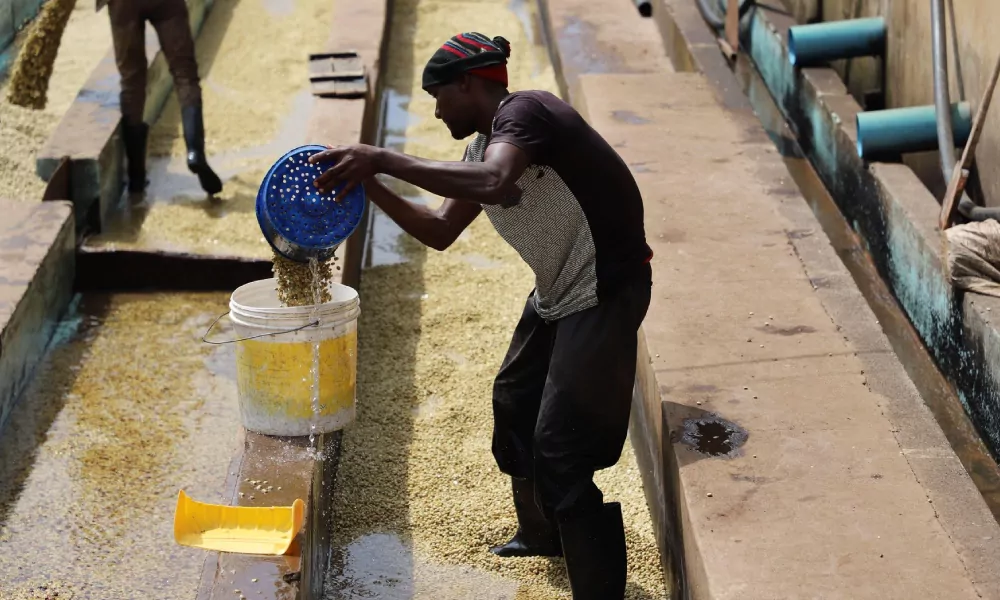Over the last few years, coffee production in Tanzania has increased, with the country becoming the fourth-largest producer in Africa.
The majority of Tanzania’s coffee regions are located in the highlands on the slopes of Mount Kilimanjaro and Mount Meru in the Northern areas of the country. These regions have nutrient-rich volcanic soil, making them ideal for coffee cultivation.
More so, the majority of coffee crops in Tanzania are shade-grown, planted alongside banana trees.
Generally, Robusta varieties represent 30% of the crops harvested between 700 and 900 meters above sea level. Overall, arabica varieties make up the majority of the country’s crops, representing 70% of the total production.
Arabica varieties are often grown at higher altitudes, allowing the coffee cherries to mature at a slower rate and develop more sugars. When roasting Tanzanian coffee, roasters should keep this variable in mind and develop a profile that highlights the sweetness of the beans.

Tanzania Peaberry coffee is a rare African coffee varietal grown in the Mbeya Region of Southwestern Tanzania and is often highly sought after within the specialty sector.
Usually, coffee cherries contain two seeds or beans that grow opposite each other, creating an elliptical shape with a flat surface. However, in around 5-10% of cases, a defect or natural mutation means that only one of the seeds fertilises.
These are known as peaberry coffee beans and are often in high demand as they tend to develop unique flavour notes.
That said, peaberry beans often have a higher density and can be a challenge to roast. Therefore, it is recommended roasters use a high charge temperature in order to reach first crack faster to avoid baking the coffee.
It is important for roasters to understand how the roasting curve behaves and allow for enough time in the developing phase to achieve an optimal outcome.
One of the most important characteristics that define coffee production in Tanzania is that most of the coffee is wet processed, allowing the coffee to develop a clean and balanced profile.
These are production conditions roasters should take into account when they want to develop a roast profile.
The level of sugars contained in the coffee beans, or the type of process used, can alter the outcome of the roasting process.

